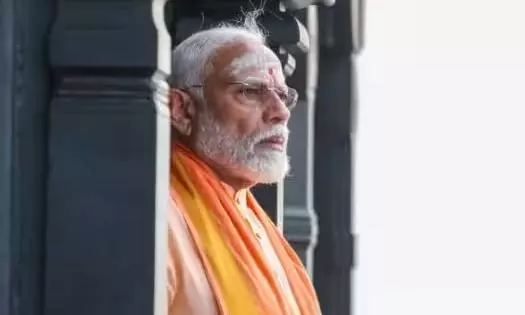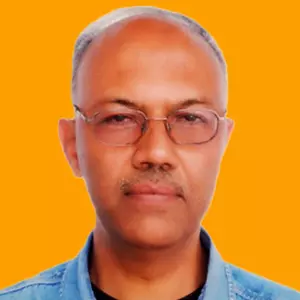
- Home
- India
- World
- Premium
- THE FEDERAL SPECIAL
- Analysis
- States
- Perspective
- Videos
- Sports
- Education
- Entertainment
- Elections
- Features
- Health
- Business
- Series
- In memoriam: Sheikh Mujibur Rahman
- Bishnoi's Men
- NEET TANGLE
- Economy Series
- Earth Day
- Kashmir’s Frozen Turbulence
- India@75
- The legend of Ramjanmabhoomi
- Liberalisation@30
- How to tame a dragon
- Celebrating biodiversity
- Farm Matters
- 50 days of solitude
- Bringing Migrants Home
- Budget 2020
- Jharkhand Votes
- The Federal Investigates
- The Federal Impact
- Vanishing Sand
- Gandhi @ 150
- Andhra Today
- Field report
- Operation Gulmarg
- Pandemic @1 Mn in India
- The Federal Year-End
- The Zero Year
- Science
- Brand studio
- Newsletter
- Elections 2024
- Events
- Home
- IndiaIndia
- World
- Analysis
- StatesStates
- PerspectivePerspective
- VideosVideos
- Sports
- Education
- Entertainment
- ElectionsElections
- Features
- Health
- BusinessBusiness
- Premium
- Loading...
Premium - Events

The election outcomes in UP and TN indicate the average Hindu is getting sick and tired of all the ugly politics unleashed in the name of the Hindu religion
Prime Minister Narendra Modi may have felt bad when Tamil Nadu Chief Minister MK Stalin made fun of him for repeatedly visiting his state in the run-up to the parliamentary elections.
The politician that he of course is, Modi at times appeared in public in Tamil Nadu in a very visible white veshti, with vibuthi smeared on his forehead. Whatever may have been Stalin’s motives in criticising Modi, the reality is that most Tamils were simply not impressed by the Prime Minister’s attempts to pose himself as a saviour of Hinduism.
The electoral verdict in Tamil Nadu – in no other state did the INDIA bloc have such a sweeping win – is clear proof of this.
Message from UP and TN
Indeed, the outcome of the Lok Sabha elections in two states – Uttar Pradesh and Tamil Nadu – are the best indicator that the average Hindu in this country is getting sick and tired of all the ugly politics unleashed in the name of the Hindu religion.
If this was not true, the Bharatiya Janata Party (BJP) would not have lost its seat in Faizabad-Ayodhya, just four months after the high-profile opening of a grand Ram temple, and Modi’s own victory margin in Varanasi, one of the most important Hindu pilgrimage centres, would not have crashed so badly.
The legalities apart, most Hindus seemed to be happy that a temple was coming up at a site they believed (right or wrong is another matter) where Lord Ram was born.
But most Hindus did not like the fact that the consecration ceremony had been turned into an attendance-by-invitation event instead of being opened to everyone as it happens in other Hindu temples.
Attacks on Shankaracharyas
Far worse, Modi, a politician, blundered by taking the centerstage of a religious event as if he was a member of the Hindu priestly class, even as some of his fellow ideologues launched unforgivable attacks on the Shankaracharyas for speaking out against the opening when the temple was still not fully built.
Notably, Modi neither stopped the targeting of the Shankaracharyas nor did he apologise for the blasphemy.
Hindu visitors to both Ayodhya and Varanasi speak of a great amount of resentment among ordinary Hindus vis-à-vis the so-called beautification which has taken place in both places. The bitterness is more so in Varanasi or Kashi over the many small temples that were removed arbitrarily for the sake of better access to the ancient Kashi Vishwanath shrine. Even Hindu activists are upset.
In fact, one friend who understands the region warned me that Modi’s victory was in doubt. He has been proved wrong, but the sharply-reduced victory margin shows his fears were not unfounded. If Modi and his election managers did not realise this, they can only blame what has now come to be known as the godi media for keeping the Prime Minister in the dark about the public sentiments.
Devotion runs very deep
If Lord Shiva is told to move out of his abode in the Kailash mountains, I have no doubt he will choose Tamil Nadu over even Varanasi. Devotion runs very deep in the state.
No amount of atheism practised by a section of Dravidian politics has made any dent on the average Tamil’s zeal for divinity. Indeed, in no other state can one find so many regal temples, many of them truly ancient, and so many where Shaiva and Vaishnava saints have prayed in a bygone era.Tamil Nadu is also one of the seats of Adi Shankara.
Modi hugely miscalculated by thinking that his repeated temple visits and shows of religiosity would floor the Tamil community. He misread the crowds marshalled on the streets to cheer him as growing support for his brand of religion-laced politics.
A personal exercise
Many of us who can be broadly called as Hindu devout spend varying amounts of time religiously praying every morning and evening, day after day.
We visit temples frequently and make various offerings to shrines across the country. Some of us are into yoga and meditation which we have learnt from qualified gurus.
But we know that our devotion is a personal connect between us and God, and is not meant for public display. Our meditation is done in silence, even if only for a short while, and this is for our spiritual growth, not to earn kudos from even fellow-Hindus.
We also try to visit as many Hindu religious and pilgrimage hubs as possible within our economic limitations.
Given this context, Modi comes across as a politician who is trying to prove to the people at large that he is also a Hindu religious leader. There was absolutely no other reason why he made such a public spectacle of every temple visit (putting other devotees into inconvenience) and the 45-hour meditation spectacle at Kanyakumari.
Learn from Tamil actor’s example
Should Modi not visit temples then? Of course, he can. But if he wants to be religious while holding a public office, he must learn from a well-known Tamil movie actor.
This actor (I will avoid giving his name) has a habit of visiting a Kali temple in Chennai. To ensure that his visit doesn’t affect the temple activities in any way and to prevent needless crowds from collecting at the premises, he has made it a point to reach the temple some 20 minutes before closing time, either alone or with family members, after giving an advance tip to the priests who keep the programme a secret.
The actor prays intently for a while and exits as quietly as he came coinciding with the time when the temple is shut for the night.
Hinduism at its best
It will be good for Modi – and the country – if the Prime Minister devotes more time for administration and leaves religious affairs to those whose job it is.
Hindu religion has thrived despite centuries of Mughal and British rule. It certainly faces no danger today from any other religion.
People are not voting for Modi and the BJP to build temples or to do yoga and meditation publicly amid a glare of publicity or to “re-convert” Muslims and Christians.
The revered Chandrasekharendra Saraswati of the Kanchipuram Peetam was firmly opposed to religious conversions – from and to any religion.
He warmly welcomed and blessed Muslims and Christians who sought his blessings. A small mosque exists at the very entrance of the Kancheepuram Peetam, who its Shankaracharyas accepted as a part of their own sacred life. This was and is Hinduism at its best.


